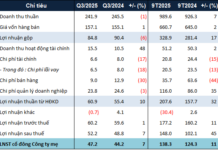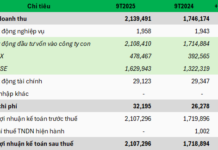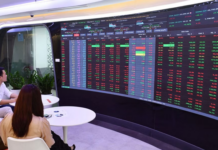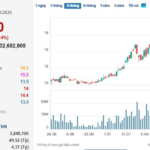Quantifying Challenges
Resolution No. 222/2025 of the National Assembly on the International Financial Center in Vietnam, located in Ho Chi Minh City and Danang, is a strategic move, opening the door for Vietnam to participate in the global financial market. Seizing this great opportunity, the administrations of both cities have accelerated their preparations, aiming to establish the International Financial Center in the near future.
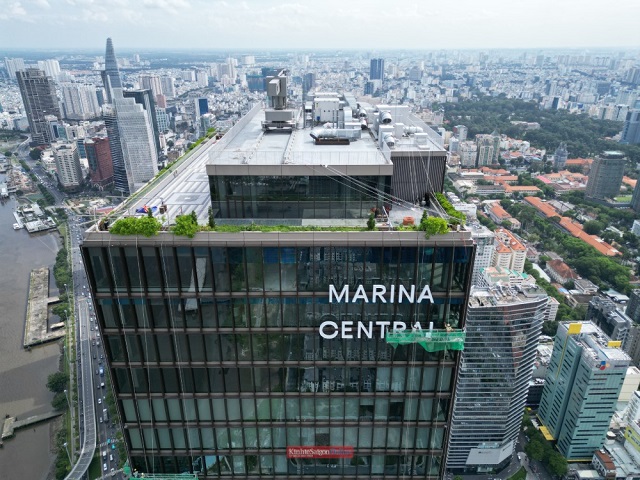
A Glimpse of Saigon Marina International Financial Center. Photo: Le Vu
|
Against this backdrop, the State Bank of Vietnam (SBV) has also published a draft decree on licensing, establishment, and operation of banks, as well as foreign exchange management, anti-money laundering, counter-terrorism financing, and counter-proliferation financing within the International Financial Center in Vietnam. This move aims to gather public opinions and perfect the legal framework for this financial model.
Accordingly, the drafting agency proposes conditions regarding total assets for entities intending to establish commercial banks within the center, including: a minimum of VND 100,000 billion for banks with 100% domestic capital; a minimum of USD 10 billion for banks with 100% foreign capital; and a minimum of USD 20 billion for branches of foreign banks.
Banks must also demonstrate profitability for three consecutive years before submitting a request to establish a subsidiary bank within the center. Simultaneously, they should ensure that non-performing loans do not exceed 3%, comply with safety ratios, and possess an effective internal control system. Furthermore, the owners must provide a written commitment stating, “The establishment proposal and business plan are feasible and will not affect the safety and stability of the credit institution system.”
These conditions are well within the capabilities of numerous state-owned commercial banks and joint-stock commercial banks currently operating in Vietnam. However, the competitive pressure from international financial institutions on multiple fronts has caused some entities to express apprehension.
At a workshop on the role of the banking system in building the financial center, Ms. Truong Thi Thu Ba, Deputy Director of BIDV’s Financial Institution Division, pointed out that the vast gap in total asset scale not only reflects the limited resources of Vietnamese banks but also highlights the challenges in investing to enhance competitiveness.
“BIDV is one of the largest banks in Vietnam in terms of total assets, but it is only about 1/60th the size of Canadian Imperial Bank of Commerce – CIBC,” BIDV’s representative compared.
In addition to the disadvantage in terms of asset scale and capital, the gaps in data infrastructure, technology, and digital integration also hinder Vietnamese banks’ ability to compete with international financial institutions within the financial center.
“Vietnam’s data infrastructure is weak and lags behind the world. Moreover, our cross-border payment connectivity is not as robust as that of other countries. These issues require the leading role of regulatory agencies,” said Ms. Ba.
From an expert’s perspective, Mr. Do Thien Anh Tuan, a lecturer at the Fulbright School of Public Policy and Management, expressed concern that the financial liberalization process, especially in the context of establishing the International Financial Center in Vietnam, would face challenges due to potential hidden bad debts and limited risk management capabilities.
Regarding bad debts, official statistics show that the ratio of non-performing loans in the banking system remains within safe limits, but this is largely due to accounting techniques such as debt rescheduling, debt restructuring, and transferring bad debts to VAMC – an entity that mainly serves as a temporary “warehouse.” “When the market fluctuates or capital flows reverse, these debts can easily become a liquidity burden, leading to a crisis of confidence and the risk of a chain collapse,” Mr. Tuan noted.
In terms of risk management capabilities, some small banks or those with a high level of state ownership are still in the early stages of applying Basel II standards, while many foreign banks have already implemented Basel III to enhance their resilience. Furthermore, the capital adequacy ratio (CAR) of some banks is close to the minimum threshold and heavily relies on short-term capital for medium and long-term lending. This risky model has caused difficulties for banks in South Korea and Indonesia during regional crises.
Crafting a Long-Term Financial Liberalization Roadmap
One of the fundamental principles for successful financial liberalization is a gradual, selective approach that aligns with the readiness of institutions, supervision, and the capacity of the domestic market. Therefore, financial liberalization should not outpace institutional reforms but should follow a well-thought-out roadmap, according to experts.
 The International Financial Center in Vietnam is being developed in Ho Chi Minh City and Danang. Photo: LE VU |
Mr. Do Thien Anh Tuan suggested that removing financial barriers should be accompanied by clear conditions and implemented in phases with specific “open-close” criteria based on macroeconomic stability indicators, the level of institutional perfection, and risk supervision capabilities. A notable example is Chile, which employs models such as requiring a minimum holding period or a reserve requirement ratio for short-term capital. As a result, the country has maintained financial stability, effectively controlled inflation, and attracted high-quality and stable capital flows.
In parallel with the opening process, there is a need to improve the health of the financial and banking system by genuinely, transparently, and systematically addressing bad debts. Moreover, it is essential to fully implement Basel II and selectively apply Basel III tools for systemically important banks (D-SIBs), including leverage ratio standards, counter-cyclical capital, and short-term and long-term liquidity.
“Strictly apply international standards such as IFRS9 in debt classification and risk provision to accurately reflect asset quality. Additionally, restructure VAMC to become a professional asset handling organization, operating on market principles, and independently authorized to buy, sell, restructure, and auction assets,” Mr. Tuan suggested. He also emphasized the importance of developing a secondary market for bad debts and encouraging private investment in the buying and selling of these assets.
BIDV’s representative suggested that the new financial center should focus on Vietnam’s strengths, such as its young and mathematically proficient workforce, which can provide financial services at 30-40% of the cost compared to Singapore or Hong Kong.
Furthermore, Vietnam can draw references from India’s Gift City financial center model, as the two countries share similar levels of economic development and human resource quality. Despite being only a decade old, Gift City has successfully attracted 450 financial institutions to invest in the center.
Van Phong
– 07:00 10/09/2025
“From Laying the Foundations of Monetary Independence and Economic-Financial Sovereignty to the Aspiration of Making Vietnam a Prosperous and Powerful Nation.”
The State Bank of Vietnam has stood the test of time, accompanying the nation’s history for 74 years. It has not only served as the financial and monetary authority but also acted as a formidable “shield,” safeguarding the country’s macroeconomic stability. Through its adept management of inflation, exchange rates, and vigilant oversight of the banking system, the State Bank has solidified its pivotal role in protecting monetary sovereignty and bolstering the foundations of an independent and robust economy. The Bank’s efforts have fostered unwavering trust as the nation strides confidently towards international integration.
A Creative Makeover: Unveiling EVNFinance’s Transformation with a New Name and Logo Post-Inspection
“EVNFinance (EVF) has announced a name and logo change following an inspection that revealed a number of irregularities in its lending practices. The inspection found that EVF had granted credit to organizations and individuals who did not meet the legal requirements, misclassified assets, and improperly provided domestic credit in foreign currency.”











